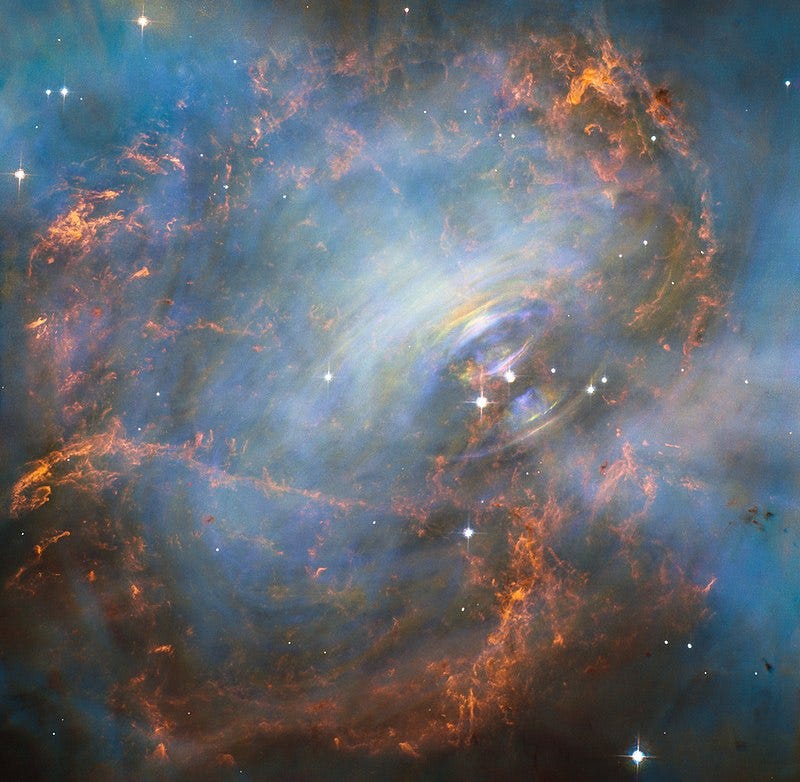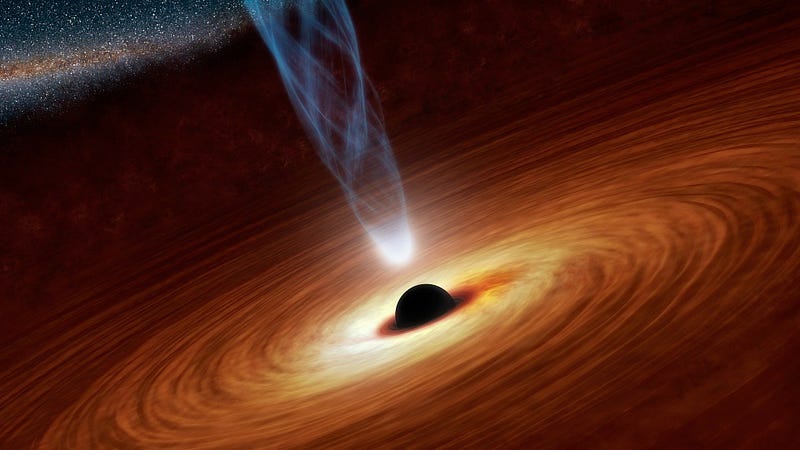Have We Misunderstood Black Holes? Exploring Planck Stars
Written on
The Mystery of Black Holes
Black holes are among the most enigmatic entities in the universe. They are known for consuming stars, colliding with one another, and even exhibiting strange behaviors like ‘burping’. Despite the extensive research surrounding these phenomena, our comprehension of their underlying mechanics is limited. The equations we employ to describe black holes often clash with established physical laws. This discrepancy has led many scientists to question whether our understanding of black holes is fundamentally flawed. What if these cosmic phenomena aren’t black at all, nor are they true holes? Instead, could they be dark stars with Planck cores that distort time to such a degree that they mimic the properties of singularity black holes? Enter the groundbreaking concept of Planck Stars!
Before we delve into Planck Stars, it's essential to understand the forces preventing objects from collapsing into black holes. For instance, why doesn't the Earth, the Sun, or a neutron star simply implode into a singularity? The answer lies in outward pressure.

The Earth remains stable against its own gravity due to the repulsive electromagnetic forces between its atoms. This force is what keeps you from falling through the floor. The Sun, being much more massive, can overcome this force to fuse atoms together. However, it doesn't collapse because the energy released from hydrogen fusion generates outward pressure, which creates sunlight. Neutron stars, on the other hand, are incredibly dense remnants of massive stars that have exhausted their fusion fuel, fusing fundamental particles into neutrons. This ‘neutron degeneracy’ produces an outward force that halts further collapse. This is the last known force capable of stopping a massive object from collapsing into a singularity—a point of infinite density.

Stars that exhaust their hydrogen (or helium) fuel and possess sufficient mass to surpass neutron degeneracy's outward pressure continue collapsing until they reach a dimensionless point of infinite density—referred to as a ‘singularity’. This singularity creates an event horizon, a boundary where escape velocity surpasses the speed of light, rendering it 'black' and 'holey'. Once something crosses this threshold, it cannot return, not even light.
While this understanding is coherent and remains the prevailing view of stellar evolution, black holes and singularities often disrupt the foundations of physics, leading to paradoxes. Notably, they create the information paradox, which states that information cannot be lost according to thermodynamics—one of the cornerstones of modern physics. For example, your car journey generates heat and gases that carry information into the environment, allowing someone to deduce that you traveled from your home to a store.

However, black holes seem to condense information-laden matter into a singularity, a dimensionless point devoid of information. Over trillions of years, they emit Hawking radiation, seemingly erasing this information from existence, which appears to violate fundamental laws of physics.
A novel perspective on black holes could potentially explain dark matter as well. This new model suggests that black holes may not be dark or hole-like but only appear so, stemming from an outward pressure beyond neutron degeneracy.
Chapter 1.1: The Planck Length and Its Implications
The Planck length, the smallest conceivable length at approximately 1.616255(18)×10^-35 m—around a billionth of a billionth the width of an electron—originates from the Heisenberg Uncertainty Principle and the principles of quantum physics. Importantly, nothing can theoretically be smaller than a Planck length. This notion contradicts the idea of a singularity, which is dimensionless and thus smaller than a Planck length. The conundrum arises due to our lack of a known mechanism that can produce a force capable of preventing a black hole's core from collapsing into a singularity.

This dilemma was addressed by Carlo Rovelli, who examined Loop Quantum Gravity Theory (LQG)—a potential unifying theory for quantum mechanics and general relativity. He proposed that this framework could generate a force preventing a black hole's core from becoming a singularity. Specifically, quarks would repel each other because their information cannot compress beyond the Planck length. This results in an outward force known as quantum-gravitational pressure, implying that black holes may not harbor singularities at their cores. Instead, they would contain a highly dense core that remains stable due to this pressure.
Rovelli dubbed these entities Planck Stars, which differ significantly from singularities. They exceed the Planck length while still being extraordinarily dense, yet not infinitely dense as singularities are. This limitation means that Planck Stars lack an event horizon!
Section 1.2: The Behavior of Planck Stars
If one were to fall into a Planck Star, it might seem to observers as though they had crossed an event horizon. However, Planck Stars can still allow matter to escape, albeit over immense timescales. Upon nearing the ‘trapping horizon’ of a Planck Star, you would appear to move extremely slowly, virtually stationary, but eventually, after billions or trillions of years, you could emerge.
Thus, while they may visually resemble black holes, Planck Stars are neither black nor hole-like; they merely behave as such within our timeframe.
The first video, "What Most People Get Wrong About Black Holes," delves into the misconceptions surrounding black holes and the implications of these misunderstandings on our understanding of the universe.
Chapter 2: Testing the Planck Star Hypothesis
All the black holes and supermassive black holes we've identified might be misinterpreted phenomena. They remain fascinating and exhibit bizarre physics, yet they may not be the singularities that scientists have long debated over.
Rovelli emphasizes the necessity of empirical validation for any viable theory. He demonstrated that Planck Stars would emit distinct Hawking radiation and evaporate differently, allowing light to escape their ‘trapping horizon’. His research indicates that we should observe specific Gamma radiation emissions from evaporating Planck Stars, estimated at around 10Mev, occurring daily from nearby black holes.
The second video, "We Were Wrong About Black Holes," discusses how new findings may alter our perception of black holes and their behavior.
Gamma-Ray Bursts (GRBs) are produced by various cosmic phenomena, making it challenging to detect these weaker signals from Planck Stars amidst stronger sources like supernovae. Nevertheless, ongoing research aims to identify these signals. Discovering them would not only confirm the existence of Planck Stars but also resolve significant scientific dilemmas.
Firstly, Planck Stars could address the information paradox by preserving information without compressing it to oblivion. They would still lose mass through evaporation, but during their final moments, they would release their stored information back into the cosmos. This would prevent the need to entirely revise our understanding of physics.
Secondly, this would validate LQG as a potential path toward a unifying theory of everything—a monumental advancement in physics not seen since the eras of Einstein and Max Planck.
Lastly, there is speculation that Dark Matter could consist of particles that easily escape from Planck Stars. Although this idea remains uncertain, refining the LQG theory may lead us closer to understanding Dark Matter, as a comprehensive theory of everything must account for all phenomena.
In summary, have we fundamentally misunderstood black holes? Could they be nothing more than Planck Stars with a ‘trapping horizon’? While the validity of Loop Quantum Gravity remains unproven and the predicted GRBs have yet to be observed, the theory presents a compelling case. Unlike many other theoretical frameworks, such as string theory, it is empirically testable. Keep an eye out for GRBs, as their detection could unlock answers to some of the greatest mysteries in physics.